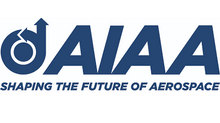Midland developing strong reputation in 'Central Space Basin'
- Yvette Garcia
- Nov 2, 2021
- 3 min read
Official: By the end of next year, 2-4 new companies will take up residence at Midland spaceport
The Permian Basin is known globally as one of the most prolific oil and gas producing basins on the planet. Now it’s developing a reputation as a prime member of what is known as the Central Space Basin.
There is a ‘hub’ of six spaceports in the central US and Midland’s International Air and Space Port and its adjacent Spaceport Business Park sit in the middle, Oscar Garcia, chairman and chief executive officer of InterFlight Global Corp., told Midland Development Corp. board members at their monthly meeting Monday.
“We’re getting more calls and interest from companies wanting to explore Midland and the Central Space Basin,” he said during his third-quarter update. He estimated the tenants at Midland’s Spaceport Business Park address a market that amounts to $140 billion.
Since 2018, Garcia said his company has attracted three companies to the park, creating 200 jobs and hosted more than 50 companies who have visited the facilities. Just last week, he said, a large, high-profile company visited Midland and focused on the ability to develop an airspace corridor.

He said efforts to develop and expand Midland’s space economy are on target and on budget. Local leaders had a productive visit to Spaceport America in New Mexico in August to further development of an airspace corridor between spaceports. He added that efforts also have the support of the Texas and New Mexico congressional delegations.
Garcia predicted that by the end of next year, two to four new companies will take up residence in the business park, creating 192 good-paying jobs and adding to the city’s gross domestic product in three key areas: Satellites, high speed aircraft and testing and manufacturing.
He noted that the rapidly developing space economy is highly competitive, with many communities wooing companies to their facilities.
“They do not have the natural asset you have, which is air space,” he said. “That is a competitive advantage money cannot buy.”
Over the last decade, the MDC has invested $9.5 million in buildings and infrastructure, according to Sara Davis, MDC executive director. She said those assets belong either to the city or to the MDC. That compares to the $49 million the MDC has invested in road, water and sewer infrastructure in the same period, she added.
MDC's investment at Midland College
Damon Kennedy, vice president of instruction services at Midland College, was also on hand to offer an update on the college’s dual credit and Career and Technical Credit programs, which have received $1.35 million in investments from MDC over the last five years, from 2017 to 2021.
Kennedy said the programs saw a bit of a dip in the last year amid the pandemic and oil market downturn but expressed confidence enrollment will recover.
He told board members the program has shifted its focus from enrollment to completion and is working to improve its tracking of graduates to gauge the impact of the investment.
“What’s fascinating to me is that of the 51 percent who enrolled in the academies and then went on to college, 71 percent finished college,” he said.
The goal of the academies is not just to provide students the skills they need to go to work in Midland but the momentum they need if they want to continue their college educations, he said.
Courses have expanded to include firefighting, law enforcement, cybersecurity, HVAC technology and education.
According to Kennedy, the academies have served 2,335 students by offering 16 high demand, high wage career pathways and resulted in total tuition savings of $5.215 million or about $3,800 per student. Enrollees have seen 40 percent faster degree completion, taken 10,966 courses and earned 670 credentials he added.































Comments